My group today was a little special, as they were actually my friends - Jamie, Jeannie and Christina - and Jamie and Christina's friends. Our group name was Seahorse.
The below was the entrance to the secondary forest which led to the intertidal area. The photo was taken after the walk though :P
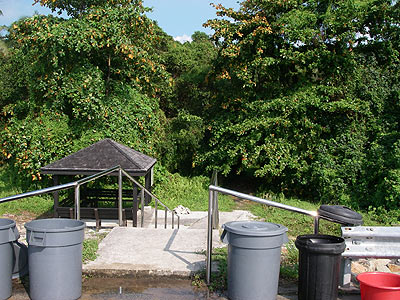
Among the first things we saw at the intertidal area were the mangrove trees. The below tree was near to the exit of the forest trail. It's probably a bakau minyak (Rhizophora apiculata), since it has red stipules.
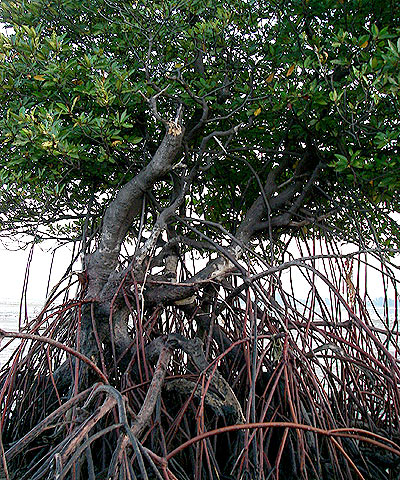
The timber from this tree was often used for fuel and charcoal-making. Mangrove trees are very important to the marine eco-system, as they provide shelter and food for many animals. They are often the nursery ground for many fishes as well, since there are lots of hiding places among the prop roots, and thus the little fishes have a higher chance of survival from the predators.
We also saw many oysters (Family Ostreidae) on the rocks near the mangrove trees.

Oysters stick themselves to rocks on their left valves with a strong glue. Being filter feeders, they open their shells slightly during high tide to suck in water and collect edible particles. At low tide, they will shut their shells tightly.
We also saw a common sea star (Archaster typicus).

These cute animals can actually burrow into the sand! So please don't stomp around when you are on sandy shores, as there might be sea stars underneath! A sea star uses sea water to support its body and move its little tube feet. Thus, never take them out of seawater for too long, as it is very stressful for them.
We also found a cute little flatworm (Class Turbellaria).
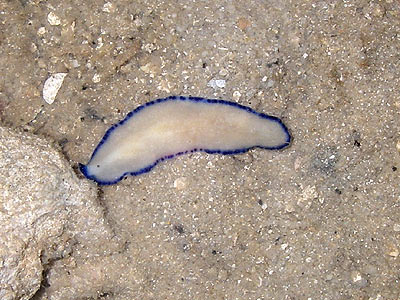
Flatworms are so flat that they can easily crawl into tiny cracks on the rocks. They are predators too, and often prey on tiny animals or immobile animals like ascidians. Some are also scavengers. And since they are hermaphrodites, each flatworm has both male and female reproductive systems, and they often fertilise each other when they mate.
There were lots of sponges (Phylum Porifera) at the sandy area too.
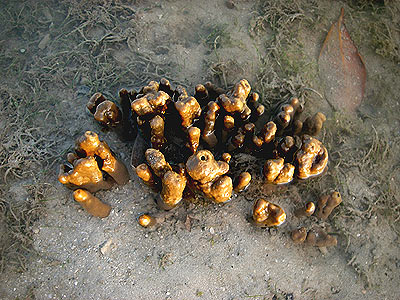
The above are brown sponges. Sponges are animals with simple body structures. They feed by filtering edible particles and plankton from the water. They will suck in the water through tiny holes, collect the edible bits, then expel the water and wastes out of bigger holes.
Here's a group shot of the team crossing the seagrass lagoon.

Seagrasses, which are flowering plants, play important roles in the marine eco-system as well. They are food for many animals, such as the dugong, and they also provide shelter for little animals. Like the mangroves, they are often used as a nursery ground by marine animals as well! In fact, we even have a volunteer group in Singapore monitoring the seagrasses in Singapore. Find out more about Team Seagrass at its blog!
We reached the coral rubble area after crossing the seagrass lagoon. One of the first animals I found was a scallop (Family Pectinidae).

Like the oysters, they are also filter feeders. Scallops can "swim" by flapping their valves.
They are also several sea snails, including the top shell (Trochus sp.) on bottom right, and the two turban shells (Turbo sp.)
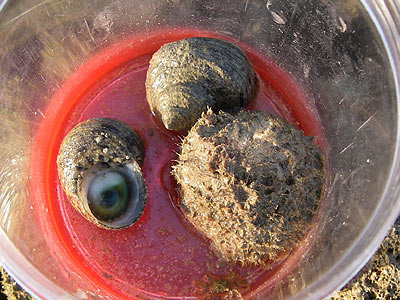
These snails feed on algae. The turban shell's rounded and thick trapdoor (aka operculum) is called "cat's eye", and are sometimes collected to make into buttons.
I managed to find the thorny sea cucumber (which remains unidentified) below at the same cluster of rocks again.
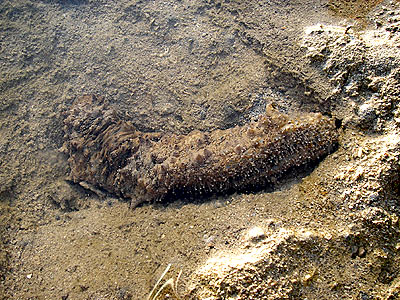
Sea cucumbers are actually related to sea stars, as they were from the same phylum - Echinodermata. Like the sea stars, they were made of a tissue which allow them to keep their body soft when they were moving around, but yet in an instance, they can turn rock hard to protect themselves when they feel threatened.
There were also lots of hairy crabs (Family Pilumnidae) at the coral rubble area.
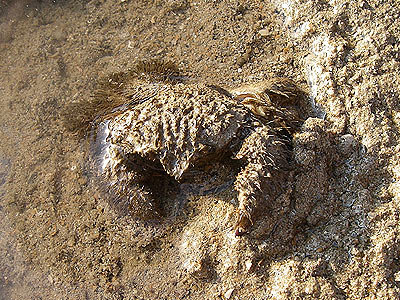
These crabs look so much like the surrounding rocks, that it can be quite difficult to spot them sometimes.
And today, we saw several upside-down jellyfish (Cassiopea sp.) as well. We have been seeing them on almost every trip recently.
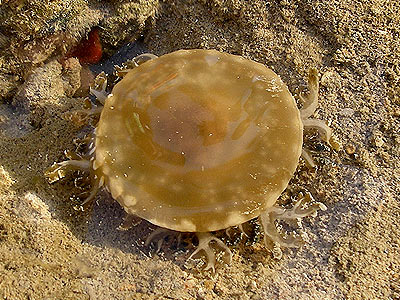
This jellyfish has symbiotic algae, mostly in its tentacles, which photosynthesises better with it being upside-down. Some of the food made by the algae will leak and get absorbed by the jellyfish.
We also saw a long-spine sea urchins (Diadema setosum).
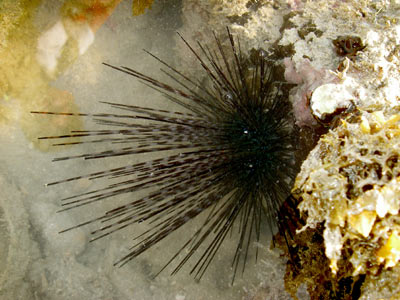
These sea urchins have long, sharp and brittle spines which break easily. They graze on algae and also scavenge.
We also saw a noble volute (Cymbiola nobilis).
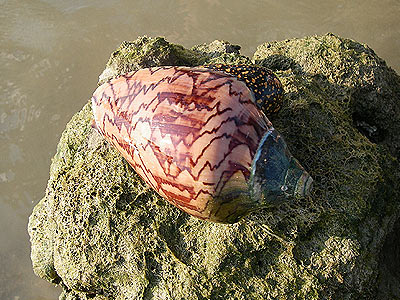
I thought the volute looked a little strange, with so much of its beautifully-coloured foot sticking out of its shell. And turning it over, I had a pleasant surprise!
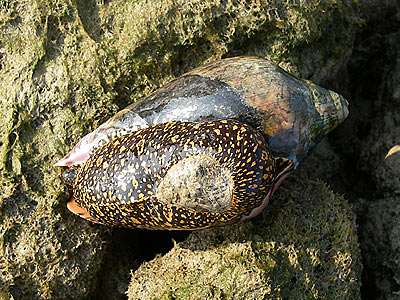
It was actually feeding! Can you see something engulfed within its foot? We knew that these huge snail normally feed on clams and other shells by seeking out buried ones with its siphons. They would enclose the prey in its huge foot, and wait until the exhausted clams open up to breathe, which can take several days! The volute will then sticks its proboscis in and eat the flesh of its prey with its radula (something like a tongue). While we knew all these, I had never seen it in action before! This was really an eye-opening experience!
We also saw two species of nudibranch today. The name nudibranch actually means "naked gills". These animals are actually slugs. The one below is a polka dot nudibranch (Jorunna funebris).
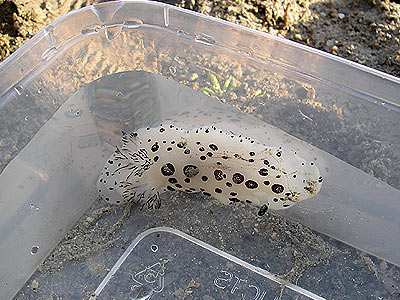
Like the flatworms, nudibranchs are hermaphrodites. They often fertilise each other when they mate. Sometimes, one may take on a male role, the other a female role. Most nudibranchs live for about a few months to a year, and they usually die after they lay their eggs.
While they looked cute, they are usually not found in aquarium trade, as many of them can secrete chemicals that make them very distasteful or even toxic, while others harbour stinging cells from the animals they feed on.
The nudibranch below is a pustoluse phyllid nudibranch (Pyhllidiella pustolosa), which is said to be able to secrete toxins when they are stressed.
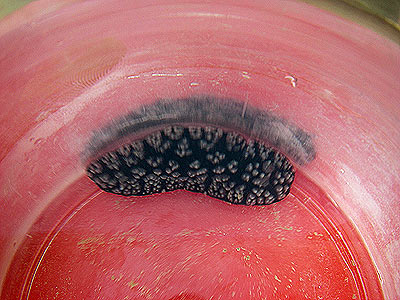
Near to the edge of the coral reef, we have the huge knobbly sea star waiting for us!
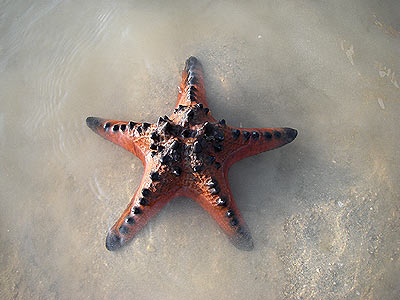
And here's the traditional group shot with the knobbly sea star.

One of the largest sea stars in local waters, the knobbly sea stars has a hard calcified armour to protect them from predators.
At the coral reef, we also saw many different types of corals.
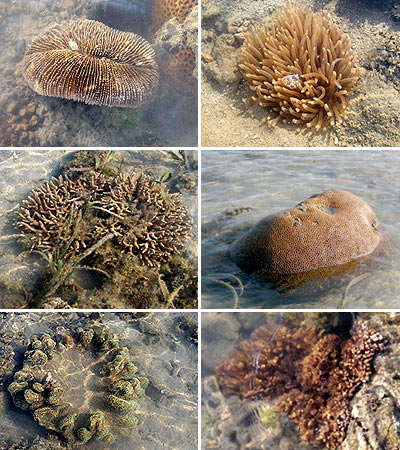
At the top were two free-living hard corals - boomerang mushroom coral (Herpolitha limax) on the left, which is a colony of many coral animals (aka polyps), and the sunflower mushroom coral (Heliofungia actiniformis) which is a single animal. Hard corals, which have a hard calcium carbonate skeleton, mostly live in a colony, like the branched coral on middle left and the boulder coral on middle right. It's like they live in HDB flats or condominium, and basically each little holes you see on the coral has a little coral polyp living inside. The bottom two were soft corals - the omelette leathery soft coral (Sacrophyton sp.) and the dead men's finger (Sinularia sp.). Unlike hard corals, soft corals don't have hard skeletons, but instead, the polyps are connected by a soft tissue mass.
Most of our corals get their colour from symbiotic algae called zooxanthallae, which like the ones in the upside-down jellyfish, provides food for the corals. Most corals also feed on plankton and smaller organic particles. The coral polyps are able to capture food with their tentacles, which contain stingers to paralyse the tiny animals.
At the coral reef area, we also saw several fanworms (Family Sabellidae).
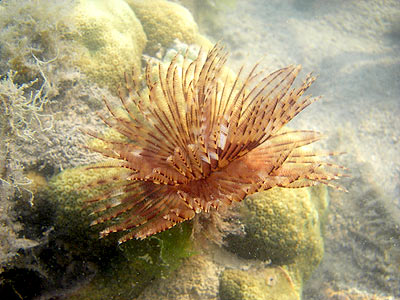
These worms live in flexible, leathery tubes. The feathery fan that we see is stuck on the top of the worm's head, and it is used to filter tiny edible particles from the water.
On the way back to the seagrass lagoon, we also saw this beautiful carpet anemone (Stichodactyla haddoni).
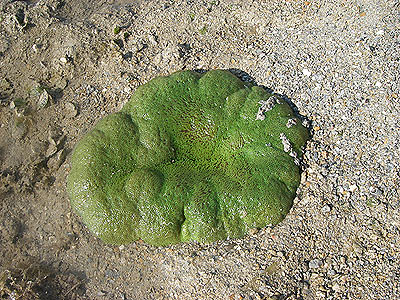
It has short, sticky tentacles which sticks to little animals that blunder into it. The tentacles have stinging cells that will paralyse the animals, and the anemone will move the food to its mouth in the centre using the tentacles. A pair of anemone shrimps actually live with the anemone, though my picture didn't turn out well so I don't have it here. You can see how they look like at one of my previous entries though.
We also saw a pufferfish! Not sure of the ID though :P
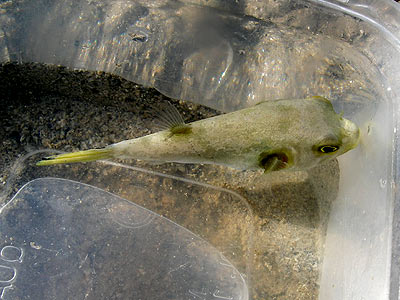
And near the seagrass lagoon, we finally saw the edible sandfish sea cucumber (Holothuria scabra).

And here's a group shot with the sandfish sea cucumber.

This sea cucumber must be properly treated before it can be eaten though.
We also found a few coastal horseshoe crab (Tachypleus gigas). One of them was so small - only about 6-7cm long, that I thought it was some slug or snail when it was burrowing just below the sand. So I had a pleasant surprise when I scooped it out with my chopsticks.
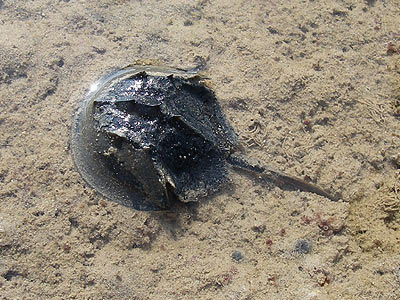
Horseshoe crabs are actually not crabs, but are more closely related to spiders and scorpions. They feed on worms, clams, algae, and dead animals. As they have no teeth, and horseshoe crabs grind the food with their legs and they crawl about.
And at the mangrove area, we also saw many fiddler crabs (Uca sp.)
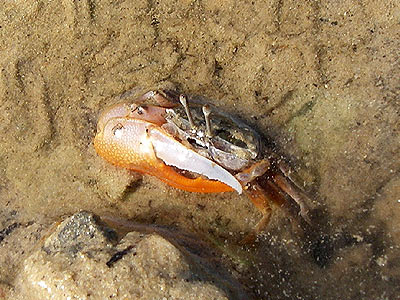
Male fiddler crabs have one enlarged pincer, which was mainly used to attract females and to intimidate rival males. They feed with their small pincers on edible particles on the sand.
After the intertidal walk, we went to the southern most point of Semakau Landfill.
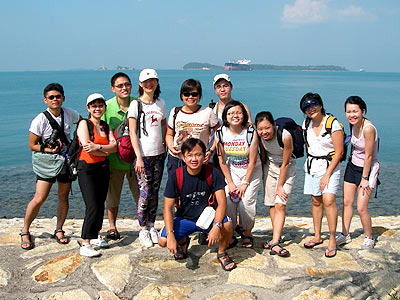
And that's me squatting down in the middle!
Indeed, we had yet another wonderful walk today with lots of interesting finds. The sea was also amazingly blue and the water super clear. Thanks to the gang for being such a good audience. It's always great to have visitors who are so interested in our wild things! :)
See also:
- More pictures on Samson's blog. It has the comb jelly which turned out totaly tranparent in my photo which I din include here.

No comments:
Post a Comment